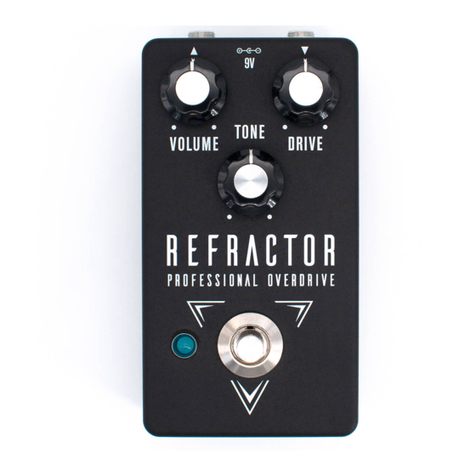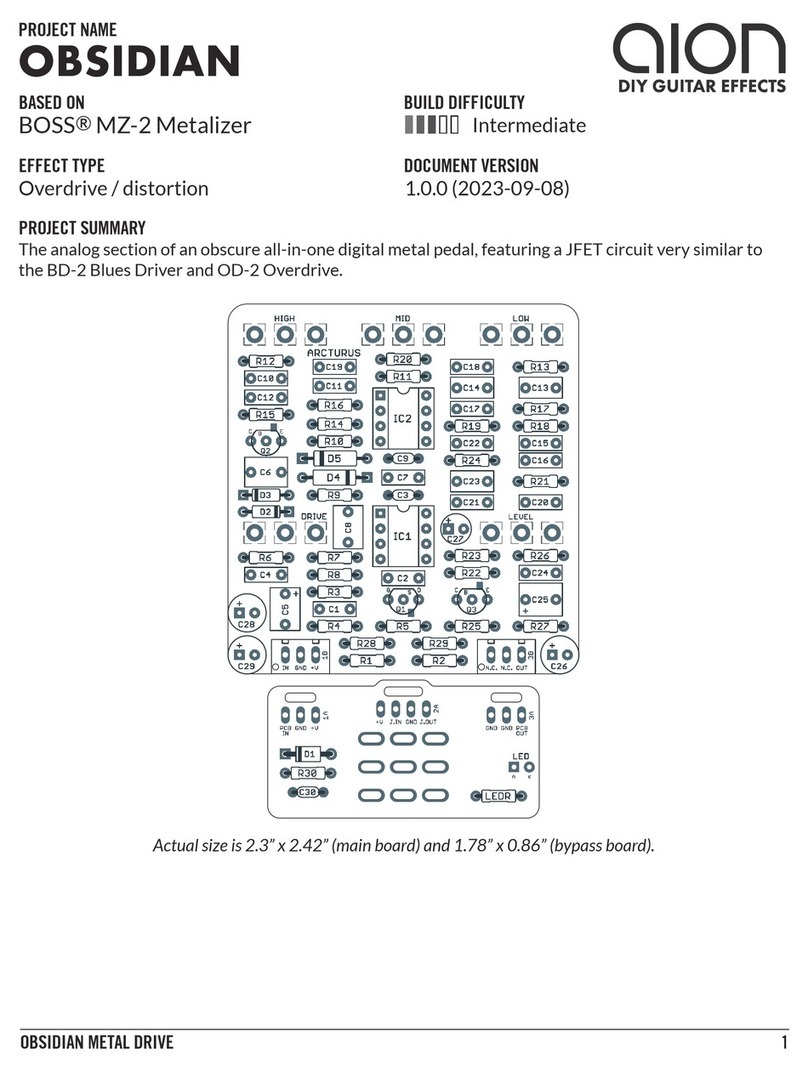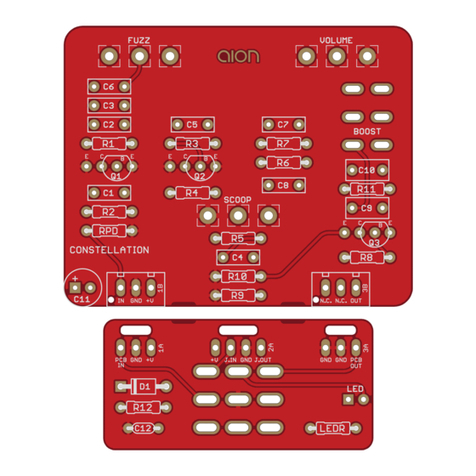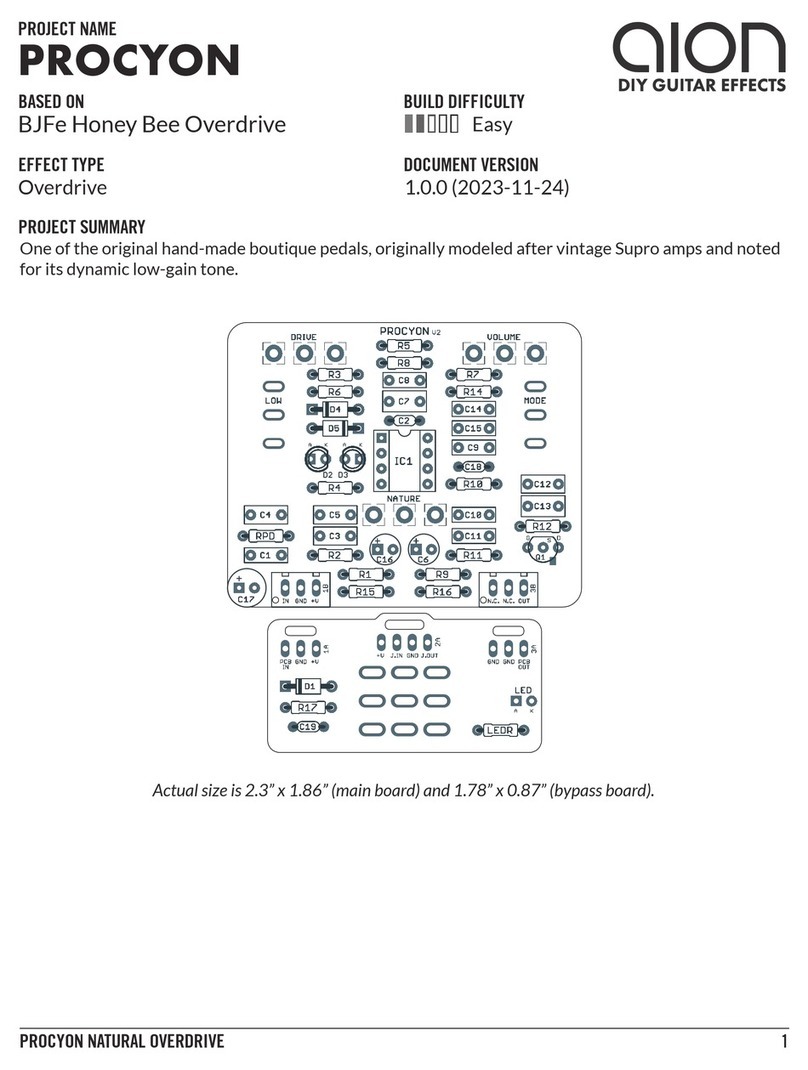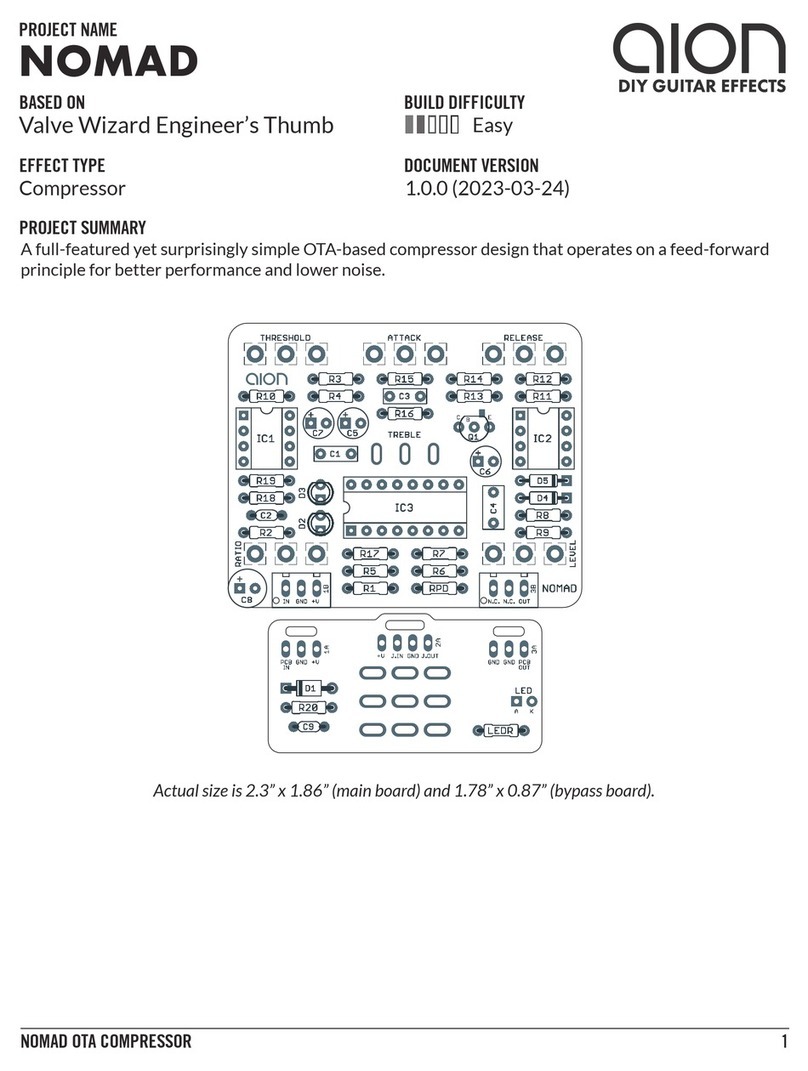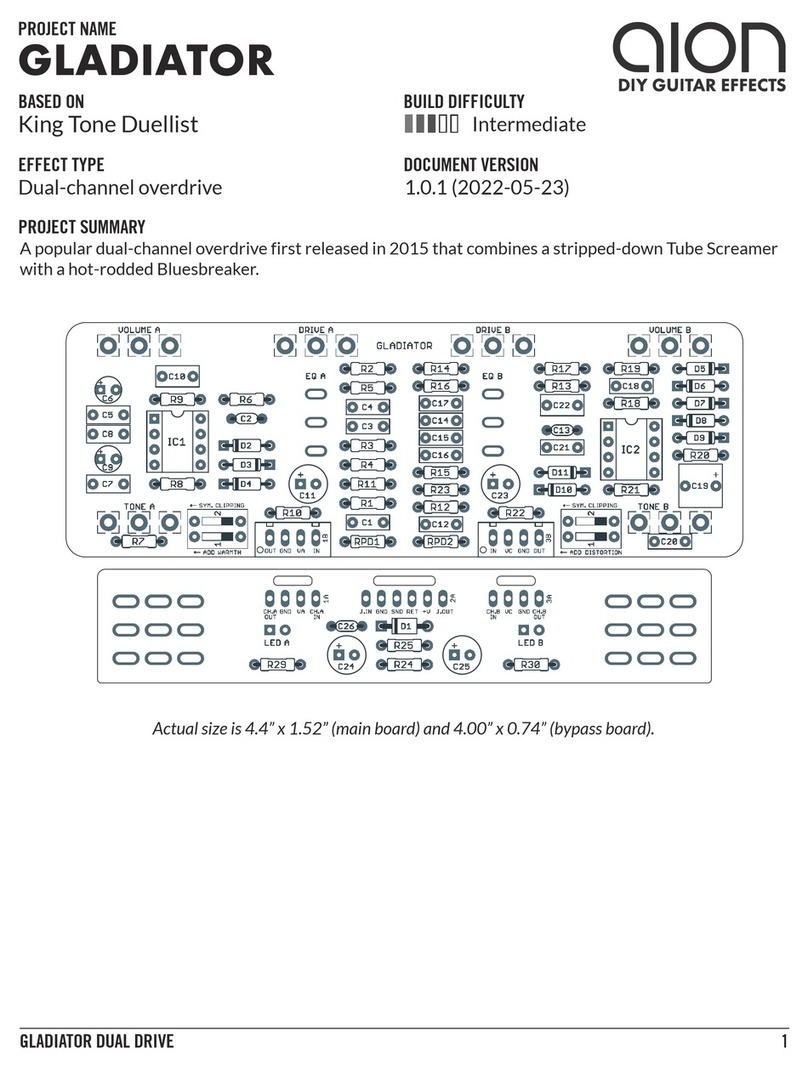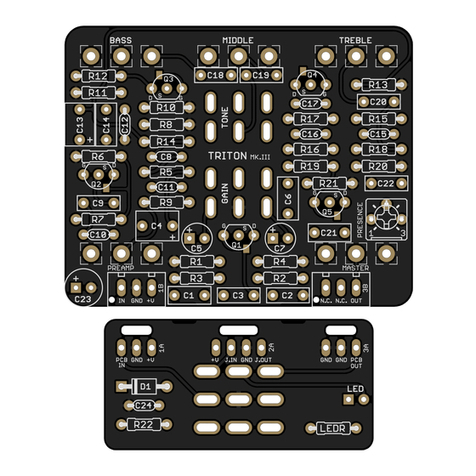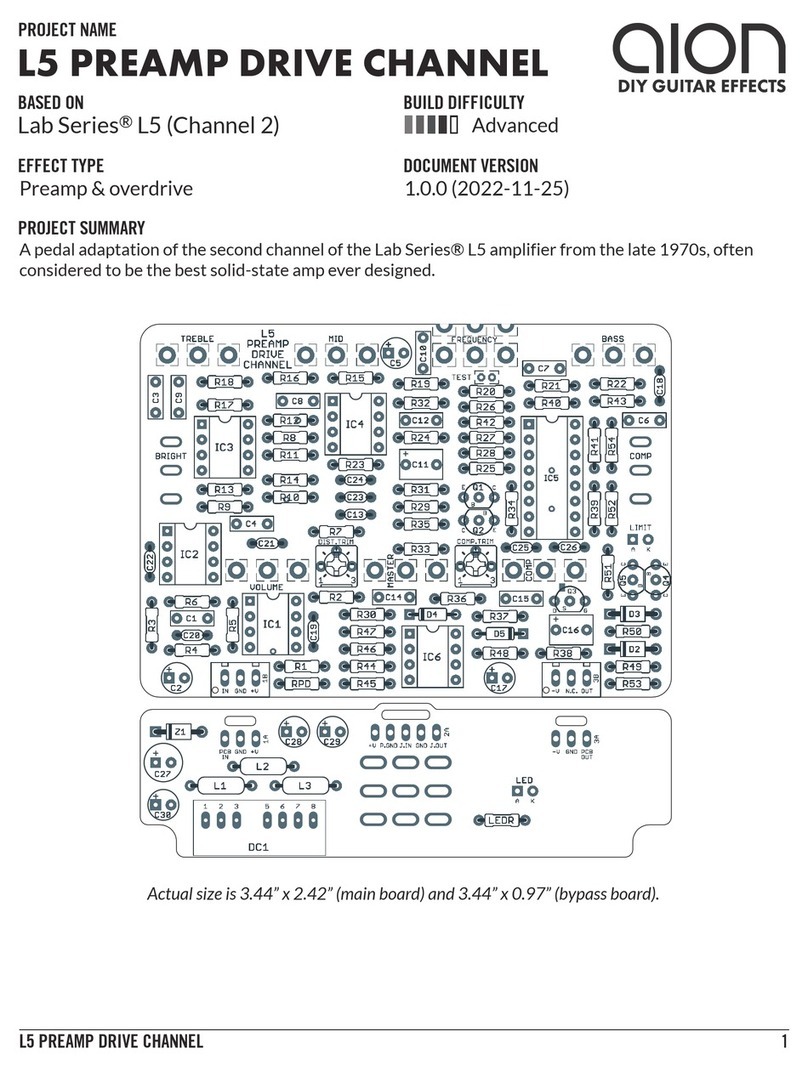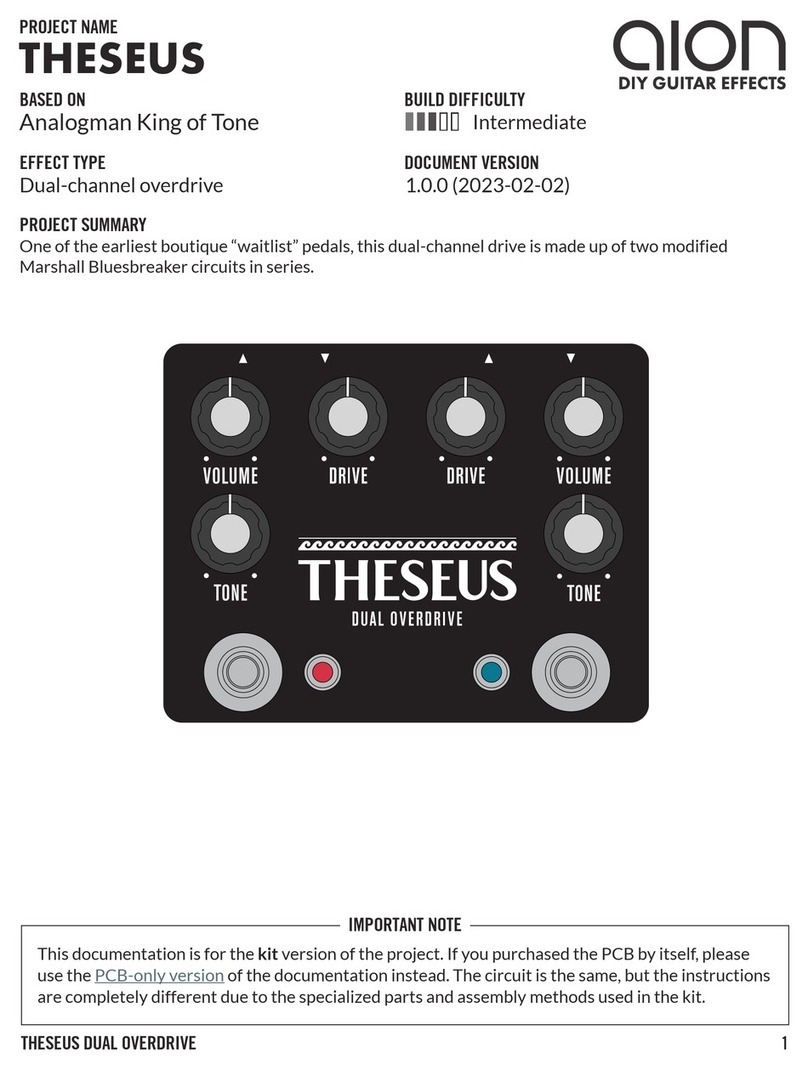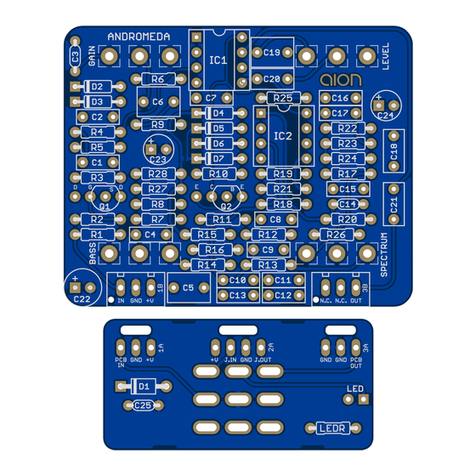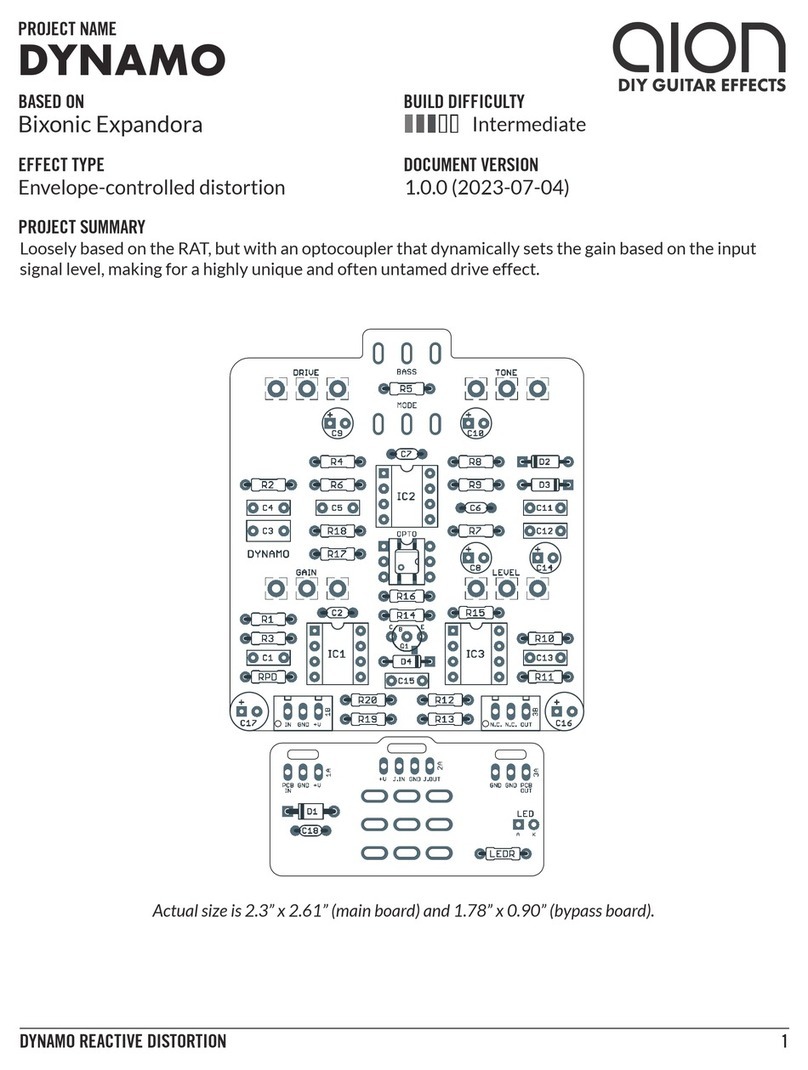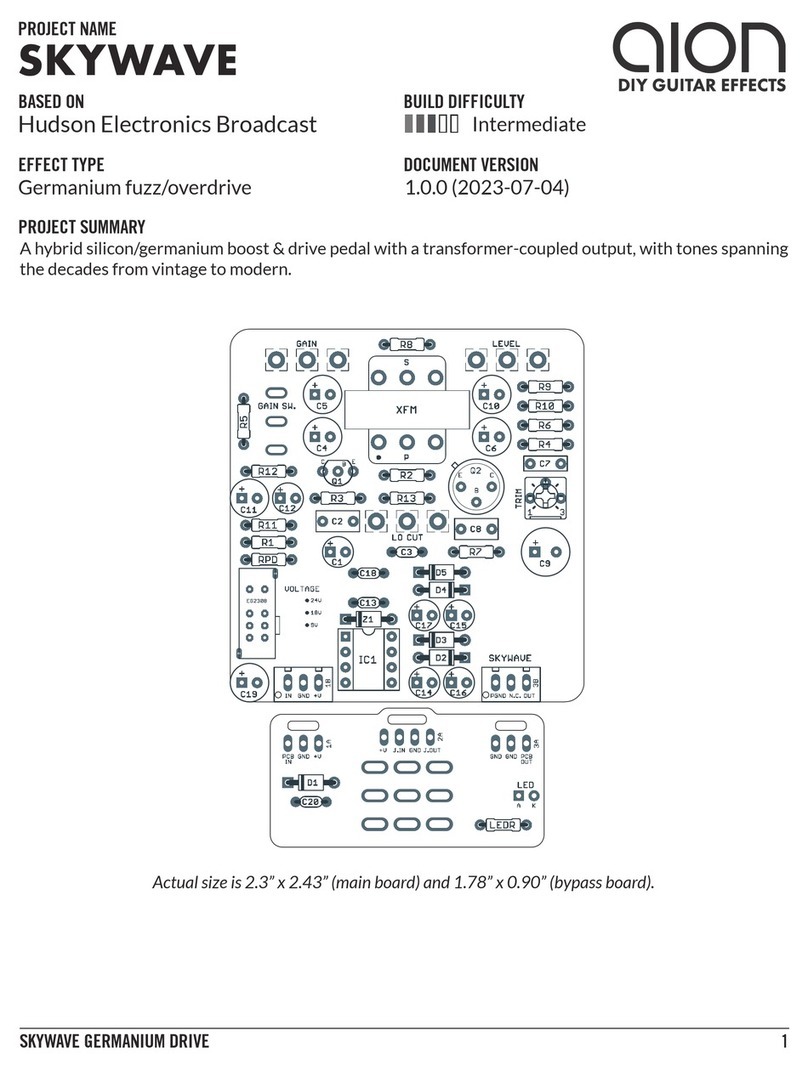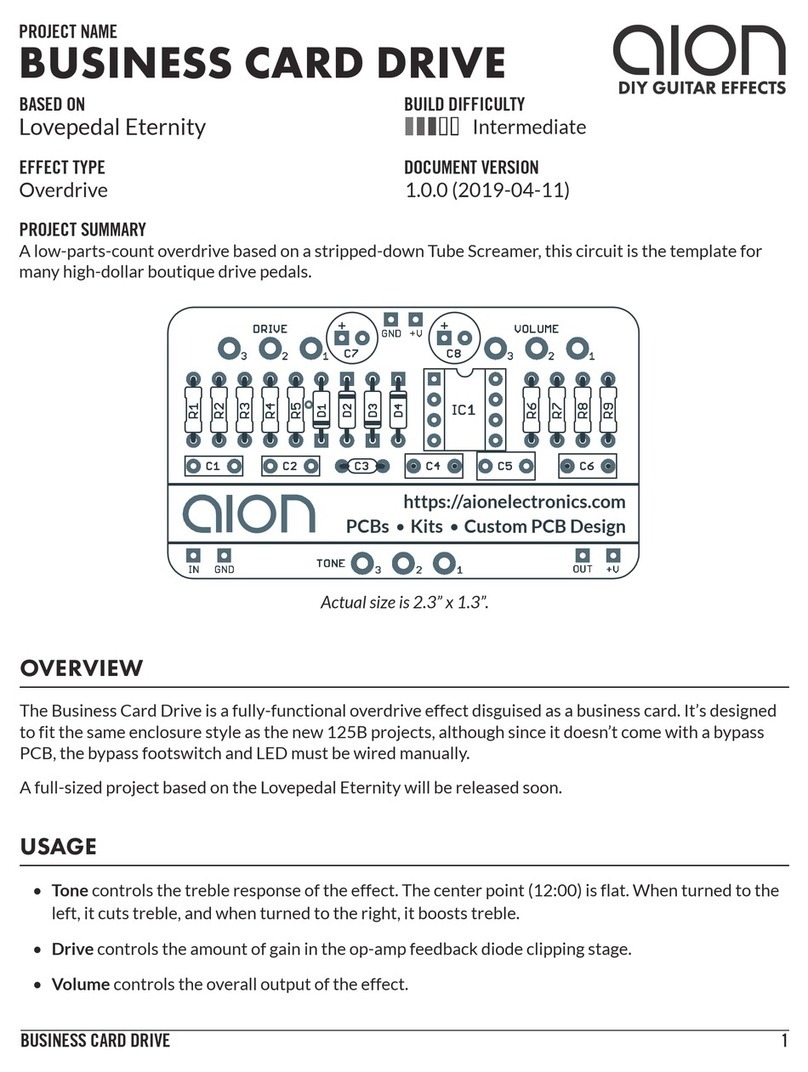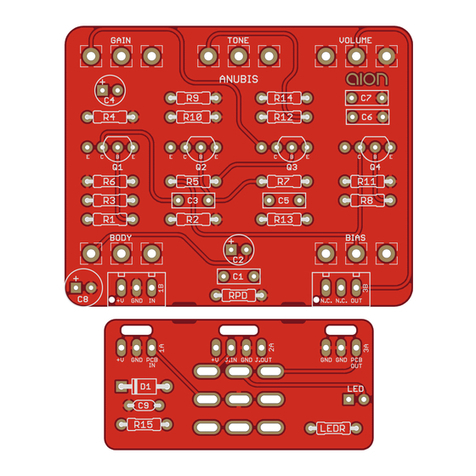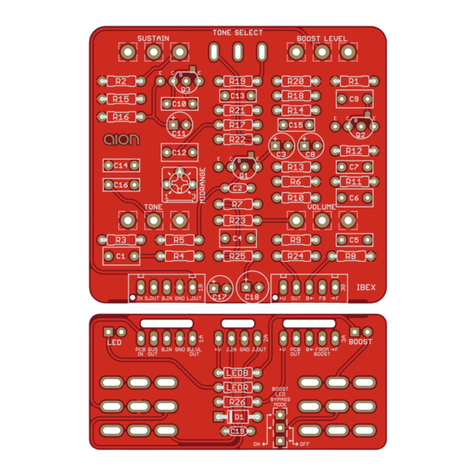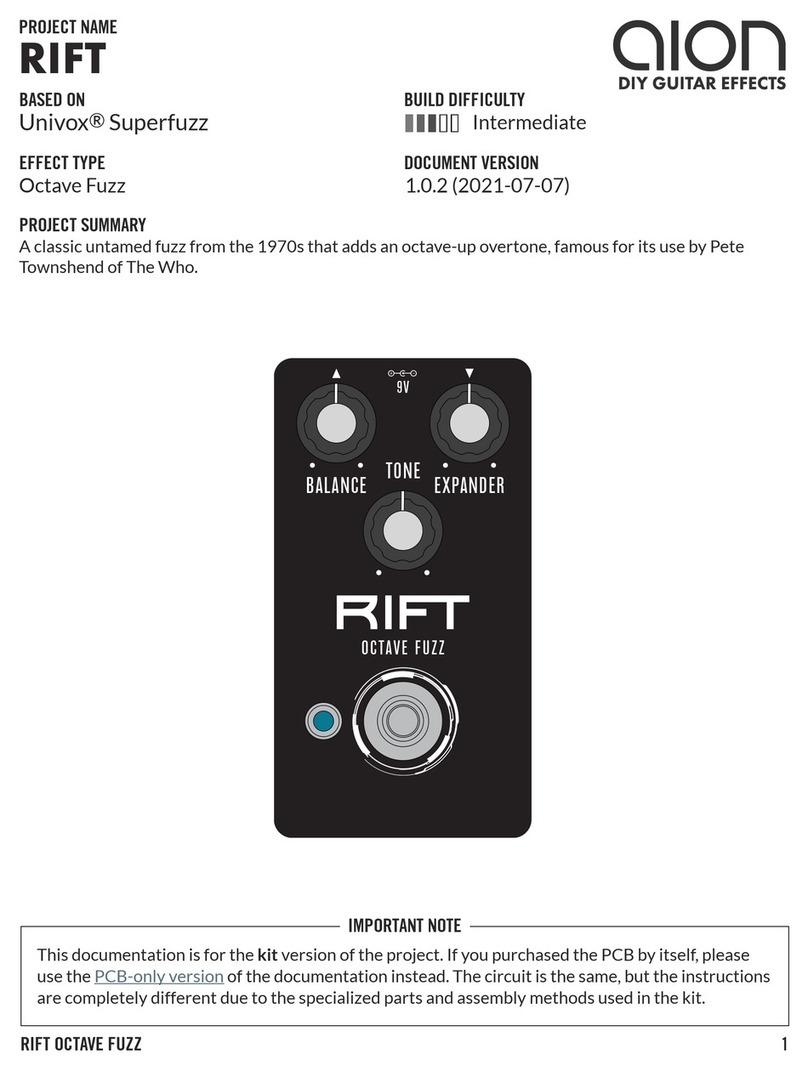
MINIMA RESONANT FILTER 3
PARTS LIST
This parts list is also available in a spreadsheet format which can be imported directly into Mouser for
easy parts ordering. Mouser doesn’t carry all the parts (most notably potentiometers) so the second tab
lists all the non-Mouser parts as well as sources for each.
View parts list spreadsheet →
PART VALUE TYPE NOTES
R1 100k Metal film resistor, 1/4W
R2 100k Metal film resistor, 1/4W
R3 10k Metal film resistor, 1/4W
R4 47R Metal film resistor, 1/4W
R5 330R Metal film resistor, 1/4W
R6 330R Metal film resistor, 1/4W
R7 6k8 Metal film resistor, 1/4W
R8 47k Metal film resistor, 1/4W
R9 22k Metal film resistor, 1/4W
R10 15k Metal film resistor, 1/4W
R11 22k Metal film resistor, 1/4W
R12 220R Metal film resistor, 1/4W Part of the Attack pot modification. Original uses 680R here.
R13 10k Metal film resistor, 1/4W Part of the Decay pot modification. Original uses 47k here.
R14 1M Metal film resistor, 1/4W
R15 4k7 Metal film resistor, 1/4W
R16 22k Metal film resistor, 1/4W
R17 33k Metal film resistor, 1/4W
R18 100k Metal film resistor, 1/4W
R19 47R Metal film resistor, 1/4W Power supply filter resistor.
RPD 2M2 Metal film resistor, 1/4W Input pulldown resistor. Can be as low as 1M.
LEDR 10k Metal film resistor, 1/4W LED current-limiting resistor. Adjust value to change LED brightness.
C1 100n Film capacitor, 7.2 x 2.5mm
C2 100pF MLCC capacitor, NP0/C0G
C3 47n Film capacitor, 7.2 x 2.5mm
C4 33n Film capacitor, 7.2 x 2.5mm
C5 68n Film capacitor, 7.2 x 2.5mm
C6 33n Film capacitor, 7.2 x 2.5mm
C7 2n2 Film capacitor, 7.2 x 2.5mm
C8 2n2 Film capacitor, 7.2 x 2.5mm
C9 1n8 Film capacitor, 7.2 x 2.5mm
C10 10uF Electrolytic capacitor, 5mm
C11 4.7uF Electrolytic capacitor, 4mm
